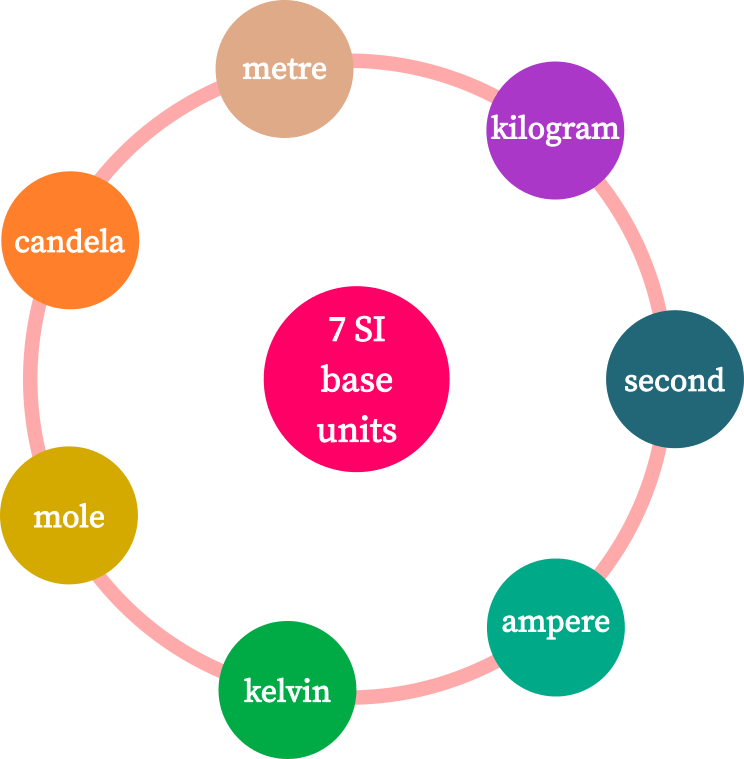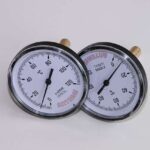1) For Length : Metre (m) which is equal to 1650763.73 wavelengths in vacuum of the red- orange radiation corresponding to the transition between the levels 2p10 & 5d5 of the krypton-86 atom. (Definition by wavelength standard)
By Line standard, Metre is the distance between the axes of two lines engraved on a polished surface of the Platinum – Iridium bar „M‟ (90% platinum & 10% iridium) kept at Bureau of Weights & Measures (BIPM) at Sevres near Paris at 0C, the bar kept under normal atmospheric pressure, supported by two rollers of at least 1 cm diameter symmetrically situated in the same horizontal plane at a distance of 588.9 mm (Airy points) so as to give minimum deflection.
2) For Mass: Kilogram (kg) which is equal to the mass of International prototype of the kilogram.
3) For Time : Second (s) which is equal to the duration of 9192631770 periods of the radiation corresponding to the transition between the hyper fine levels of the ground state of the Caesium
133 atom.
4) For Current : Ampere (A) is that constant current which, if maintained in two straight parallel conductors of infinite length of negligible circular cross section & placed one metre apart in vacuum would produce between these conductors, a force equal to 2 x 10-7 Newton per unit
Length.
5) For Temperature: Kelvin (K) is the fraction 1/273 of thermodynamic temperature of the triple point of water.
6) For Luminous intensity: Candela (cd) is the luminous intensity in the perpe ndicular direction of a surface of 1/6,00,000 m2 of a black body at the temperature of freezing platinum under a pressure of 101325 N/m2.
7) For amount of substance: Mole (mol) is the amount of substance of a system which contains as many elementary entities as there are atoms in 0.012 kg of Carbon-12.


